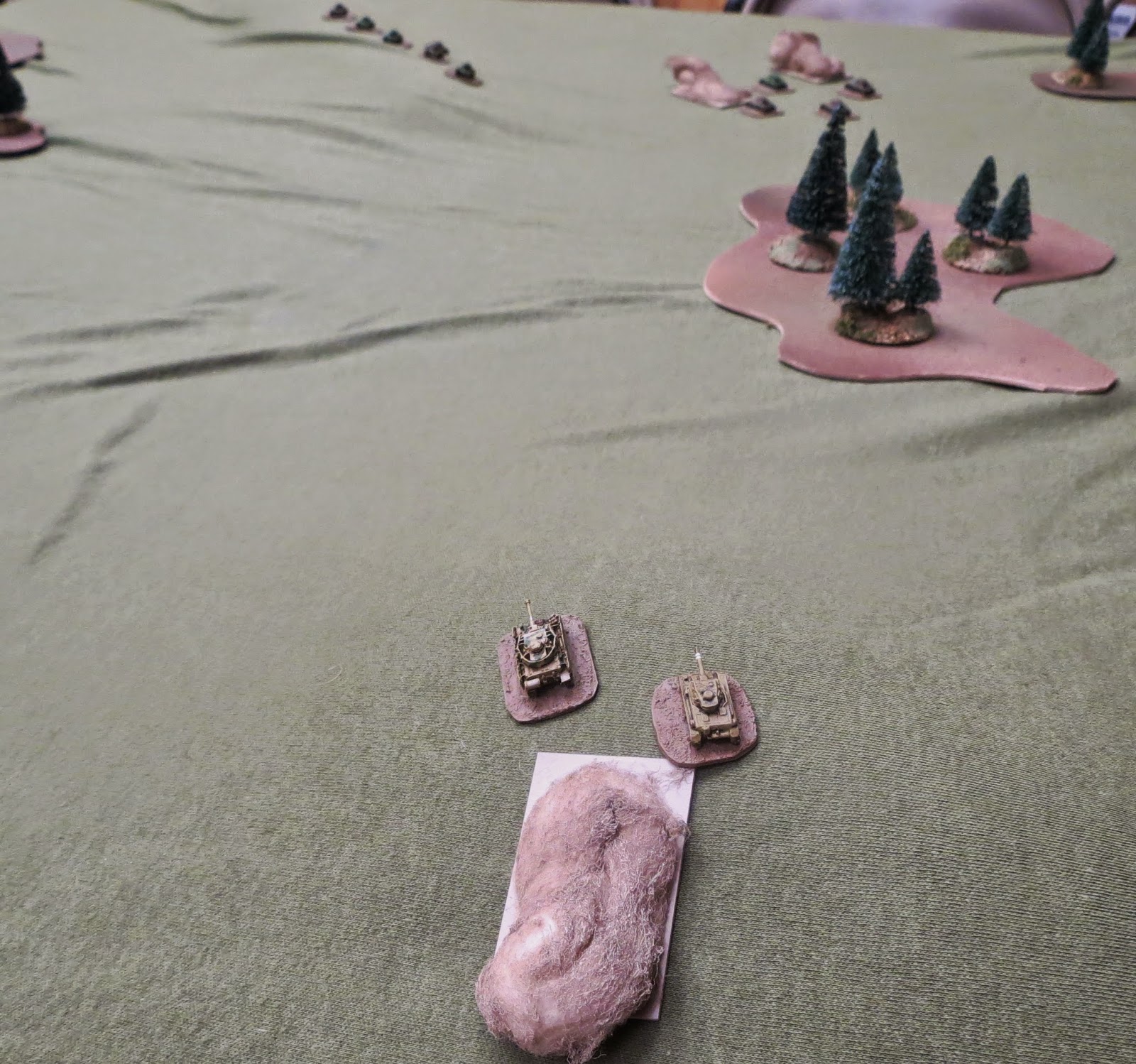I ran another playtest of A Sergeant’s War, my WWII rules-in-development. Today’s game was a test of the armor/vehicle
rules. We played 2 games in about 90
minutes, each one with about 16 vehicles in total, Germans vs. Soviets, in 6mm
scale.
In the first game, a company of T-34s advanced on 3 Pz IV-Hs
and a single Tiger. The Germans gave one
half of the company a shellacking—knocking out 4 of 6 tanks—but on the other
flank, the T-34s got in close and made mincemeat of the Germans at close
range. The Germans withdrew, with one Pz
IV knocked out, one abandoned, the Tiger damaged and abandoned, and the
remaining Pz IV retreating.
In the second game, we used hidden unit markers to add a
degree of limited intelligence. In that
game, the Soviets lost a platoon of T-70s when they moved up against what they
thought were several dummy counters, but was actually the main German
effort. A swirling fight commenced,
which saw 7 T-34s, 2 Pz IVs, and 1 StuG knocked out or abandoned. The Soviets broke and ran.
 |
| Each side had 4 real counters and 4 dummies. |
 |
| Pz IV vs. T-34. The Pz IV-H has an edge in armor penetration, and the T-34's 2-man turret inhibits targeting. |
In A Sergeant’s War, the “battle space” represents an area
maybe 500 meters across—firefight range for infantry, and knife-fighting range
for armor. At those ranges, even heavy
tanks are vulnerable to medium tanks and guns.
Thus, there isn’t as much granularity between armor and gun types, as I
just don’t think there was at really close ranges.
The turn sequence is simple stuff: Side A fires, moves,
engages in infantry fire fights, and then another fire phase, during which any
units that haven’t fired or moved yet may fire.
Enemy units may use defensive fire against your movement. There’s a number of rules restricting this
for infantry, but for vehicles, it’s simple—enemy movement in your LOS, you get
a shot.
Shooting is done by comparing unit qualities—hitting a
target of better training/experience than yourself is harder than hitting a
target of inferior ability. The to-hit
roll is further modified by movement, cover, and a few special weapon
modifiers. All rolls are done with a D6.
Once hit, the target rolls a D6 “Damage Test”, modifying the
roll by your armor and the attacker’s anti-tank rating. This yields a range of effects, from Morale
Test, to Damage, to Destroyed.
Damage is handled a bit differently than in other games—your
vehicle is out of action until “recovered,” meaning that the crew have gotten
their wits together and have the vehicle back in fighting shape. Failing to recover your vehicle twice means
that the crew abandons it. Multiple
damage results destroy a vehicle. Damage
thus represents a wide range of effects—crew casualties, minor or major damage
to the vehicle, or the crew being concussed or confused.
Once your vehicle force has taken too many casualties,
vehicles may start to bug out and retreat from the board.
Vehicle-only games play very fast, and involve a lot of
movement and relatively few dice rolls.
Thanks for looking and reading!















This sounds like it will be great for the Western Desert.
ReplyDeleteI am going to update the rules soon with early war stats--Crusaders, Lees, Pz IIIs of many flavors, etc. :)
DeletePlease include the very early British and Italian machine for Beda Fomm, etc.
DeleteI have stats for the "A" series of cruiser tanks (pre-Crusader) and the Vickers MG tanks, as well as the Italian various L33 tankettes. John Salt, who did the vehicle stats for me, sent me a ton of info, especially useful for early war as I'm don't know the early stuff as well as later war.
DeleteJust updated the rules with a bunch of early-war stats, Steven.
ReplyDelete